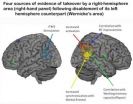(Press-News.org) On the left of this new image there is a dark column resembling a cloud of smoke. To the right shines a small group of brilliant stars. At first glance these two features could not be more different, but they are in fact closely linked. The cloud contains huge amounts of cool cosmic dust and is a nursery where new stars are being born. It is likely that the Sun formed in a similar star formation region more than four billion years ago.
This cloud is known as Lupus 3 and it lies about 600 light-years from Earth in the constellation of Scorpius (The Scorpion). The section shown here is about five light-years across.
As the denser parts of such clouds contract under the effects of gravity they heat up and start to shine. At first this radiation is blocked by the dusty clouds and can only be seen by telescopes observing at longer wavelengths than visible light, such as the infrared. But as the stars get hotter and brighter their intense radiation and stellar winds gradually clear the clouds around them until they emerge in all their glory.
The bright stars right of the centre of this new picture form a perfect example of a small group of such hot young stars. Some of their brilliant blue light is being scattered off the remaining dust around them. The two brightest stars are bright enough to be seen easily with a small telescope or binoculars. They are young stars that have not yet started to shine by nuclear fusion in their cores and are still surrounded by glowing gas [1]. They are probably less than one million years old.
Although they are less obvious at first glance than the bright blue stars, surveys have found many other very young stellar objects in this region, which is one of the closest such stellar nurseries to the Sun.
Star formation regions can be huge, such as the Tarantula Nebula (eso0650) where hundreds of massive stars are being formed. However, most of the stars in our and other galaxies are thought to have formed in much more modest regions like the one shown here, where only two bright stars are visible and no very heavy stars are formed. For this reason, the Lupus 3 region is both fascinating for astronomers and a beautiful illustration of the early stages of the life of stars.
###
Notes
[1] These are known as Herbig Ae/Be stars after the astronomer who first identified them. The A and B refer to the spectral types of the stars, somewhat hotter than the Sun, and the "e" indicates that emission lines are present in their spectra, due to the glow from the gas around them. They shine by converting gravitational potential energy into heat as they contract.
More information
ESO is the foremost intergovernmental astronomy organisation in Europe and the world's most productive ground-based astronomical observatory by far. It is supported by 15 countries: Austria, Belgium, Brazil, the Czech Republic, Denmark, France, Finland, Germany, Italy, the Netherlands, Portugal, Spain, Sweden, Switzerland and the United Kingdom. ESO carries out an ambitious programme focused on the design, construction and operation of powerful ground-based observing facilities enabling astronomers to make important scientific discoveries. ESO also plays a leading role in promoting and organising cooperation in astronomical research. ESO operates three unique world-class observing sites in Chile: La Silla, Paranal and Chajnantor. At Paranal, ESO operates the Very Large Telescope, the world's most advanced visible-light astronomical observatory and two survey telescopes. VISTA works in the infrared and is the world's largest survey telescope and the VLT Survey Telescope is the largest telescope designed to exclusively survey the skies in visible light. ESO is the European partner of a revolutionary astronomical telescope ALMA, the largest astronomical project in existence. ESO is currently planning the 39-metre European Extremely Large optical/near-infrared Telescope, the E-ELT, which will become "the world's biggest eye on the sky".
Links
Research review paper
Photos of the MPG/ESO 2.2-metre telescope
Other photos taken with the MPG/ESO 2.2-metre telescope
Photos of La Silla
Light from the darkness
2013-01-16
ELSE PRESS RELEASES FROM THIS DATE:
New Carnegie Mellon research reveals exactly how the human brain adapts to injury
2013-01-16
PITTSBURGH—For the first time, scientists at Carnegie Mellon University's Center for Cognitive Brain Imaging (CCBI) have used a new combination of neural imaging methods to discover exactly how the human brain adapts to injury. The research, published in Cerebral Cortex, shows that when one brain area loses functionality, a "back-up" team of secondary brain areas immediately activates, replacing not only the unavailable area but also its confederates.
"The human brain has a remarkable ability to adapt to various types of trauma, such as traumatic brain injury and stroke, ...
Study examines link between incarceration and psychiatric disorders
2013-01-16
WASHINGTON, DC, January 16, 2013 — Psychiatric disorders are prevalent among current and former inmates of correctional institutions, but what has been less clear is whether incarceration causes these disorders or, alternatively, whether inmates have these problems before they enter prison. A study co-authored by Jason Schnittker, an associate professor of sociology at the University of Pennsylvania, shows that many of the most common psychiatric disorders found among former inmates, including impulse control disorders, emerge in childhood and adolescence and, therefore, ...
Vaccination responsible for dramatic fall in Salmonella infections
2013-01-16
Mass poultry vaccination programmes introduced to combat Salmonella infections have led to a dramatic fall in the number of cases since the late 1990s, according to a researcher at the University of Liverpool.
Salmonella are important food-borne pathogens worldwide, causing diarrhoea, vomiting, nausea, fever and abdominal pain. There are currently around 6 million cases of illness from Salmonella across the EU each year, the majority of which are linked to food items such as eggs, chicken, beef, pork, salad vegetables and dairy products.
Between 1981 and 1991, the ...
Genetics plays major role in victimization in elementary school
2013-01-16
This press release is available in French.
Quebec City, January 16, 2013—Genetics plays a major role in peer rejection and victimization in early elementary school, according to a study recently published on the website of the journal Child Development by a team directed by Dr. Michel Boivin, a research professor at Université Laval's School of Psychology.
To come to this conclusion, Boivin and his team tested over 800 twins at three time points: when they were in kindergarten, Grade 1, and Grade 4. This sample consisted of 41% monozygotic twins—"true" twins who share ...
Breast cancer mortality has not declined in women over 85
2013-01-16
Since 1992 the number of deaths linked to breast cancer in Spain has decreased among young and middle aged patients but not among the elderly. Spanish researchers also predict that it will continue to decline over the next decade, although more slowly as observed up until now.
A new study headed by a team of Spanish researchers has analysed breast cancer mortality in Spain among different age groups from 1981 to 2007, setting a valid prediction up until 2023.
Studying this age-related tendency is interesting because any improvement could have significant social and ...
Paging Dr. Charles Dickens!
2013-01-16
Charles Dickens' tales are filled with immortal characters — think of A Christmas Carol's Scrooge and Great Expectations' Miss Havisham. But more than whims of literary invention, his characters and plots often deal with the difficult social realities of Victorian England. His portrayal of the disabled — both in terms of medicine and the social discrimination they faced — is no exception.
"Social attitudes towards the disabled can often be traced through art, from ancient times through today," explains Prof. Avi Ohry of Tel Aviv University's Sackler Faculty of Medicine, ...
Computational methods reveal how hospital-acquired bacteria spread
2013-01-16
Scientists at the Academy of Finland's Centre of Excellence in Computational Inference Research have developed novel computational methods that have yielded essential knowledge of how hospital-acquired bacteria spread and develop. These new methods, based on randomised algorithms, make it possible to analyse extensive genomic data significantly faster and more efficiently than previously. By applying these results, it is possible to better follow hospital-acquired infections in the future, or even fight them in real time.
The new methods are used to develop models of ...
New UMass Amherst research shows fishways have not helped fish
2013-01-16
AMHERST, Mass. – Despite modern designs intended to allow migratory fish to pass, hydropower dams on major Northeast U.S. waterways, including the Merrimack and Connecticut rivers, have failed to let economically important species such as salmon, shad and river herring reach their spawning grounds, say a team of economists and fish ecologists including Adrian Jordaan of the University of Massachusetts Amherst.
This raises serious questions about the impact of new dams now being planned and constructed on major waterways worldwide, say the researchers in the current ...
Engineer making rechargeable batteries with layered nanomaterials
2013-01-16
MANHATTAN, Kan. -- A Kansas State University researcher is developing more efficient ways to save costs, time and energy when creating nanomaterials and lithium-ion batteries.
Gurpreet Singh, assistant professor of mechanical and nuclear engineering, and his research team have published two recent articles on newer, cheaper and faster methods for creating nanomaterials that can be used for lithium-ion batteries. In the past year, Singh has published eight articles -- five of which involve lithium-ion battery research.
"We are exploring new methods for quick and cost-effective ...
U of T and Harvard study finds growing 'weight extremes' in the developing world
2013-01-16
Obese and overweight people are gaining weight rapidly in low-and middle-income countries while those who are severely undernourished are not experiencing similar weight gains, according to a University of Toronto and Harvard School of Public Health study.
This growing divide may force governments in the developing world to care for people who fall dramatically short on their calorie intake while simultaneously treating health problems associated with obesity, including diabetes and heart disease.
"One might think that as a country grows economically, the majority of ...


